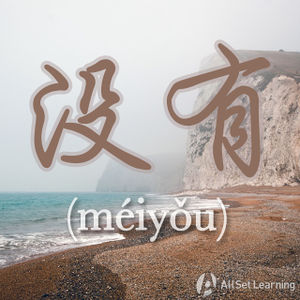Difference between revisions of "Expressing comparable degree with "you""
| Line 53: | Line 53: | ||
<div class="jiegou"> | <div class="jiegou"> | ||
| − | A + 有 | + | A + 有 + Number(+ 那么)+ 高 / 深 / 宽 / 长 |
</div> | </div> | ||
Revision as of 04:20, 14 August 2017
-
Level
-
Similar to
-
Used for
-
Keywords
有 (yǒu), besides just meaning "to have," can also be used in comparisons. It's what you use instead of 比 (bǐ) if something is "as [Adj.] as" something else.
Contents
Using 有 in a Question
The structure is very straightforward. It literally means "A has B's [Adj.]." The meaning is "A is as [Adj.] as B." This pattern is often used in questions.
Structure
A + 有 + B + Adj. + 吗?
This form is often used with 那么, which in this case means "as much." And it indicates that B is already very [Adj.]. When B is absent, 那么 mean "so" or "that".
A + 有 +(+ B)那么 + Adj. + 吗?
Examples
- 他 有 我 帅 吗 ?Is he as handsome as me?
- 泰国 有 日本 好玩 吗 ?Is Thailand as fun as Japan?
- 你 去 过 的 地方 有 我 多 吗 ?Have you been to as many places as I have?
- 你 的 工资 有 他 的 工资 那么 高 吗 ?Is your salary as high as his?
- 他 有 那么 厉害 吗 ?Is he that difficult to deal with?
Using 有 in a Statement
Notice that all these example sentences are questions. This form can also be used in simple statements. Note that 描述人身高、体重或空间大小时,用数字加相应的计量单位,如"米、公斤、平方米"即可,不用加"高、重、大"。
Structure
Used in a question:
A + 有 + B + 多 + 高 / 深 / 宽 / 长 ?
Used in a statement:
A + 有 + Number(+ 那么)+ 高 / 深 / 宽 / 长
如果不确定具体的number,可以用参照物B来代替:
A + 有 + B + 高 / 深 / 宽 / 长
Examples
- 他 有 一 米 九 。His height is 1.9 meter.
- 你 家 有 多少 平 ?How many square meters is your house?
- 我 家 有 一百 三十 平 。My house is 130 square meters.
- 这 条 河 有 多 长 ?How long is this river?
- 这 条 河 有 五 百 多 公里(长)。This river is five hundred kilometers long.
- 他 有 多 高 ?How tall is he?
- 他 有 他 那么 爸爸 高 。He is already as tall as his father.
- 这 个 门 有 多 宽 ?How wide is the door?
- 这 个 门 只 有 我 的 肩膀 这么 宽 。This door is only my shoulder's wide.
- 他 有 多 重 ?How much does he weigh?
- 这个 孩子 才 十 岁,已经 有 一百 五十 斤 了 。This kid is only ten, but he's already 150 kilograms.
See also
- Basic comparisons with "meiyou"
- Basic comparisons with "bi"
- Basic comparisons with "bu bi"
- Comparisons with "buru"
- Basic comparisons with "yiyang"
Sources and further reading
Books
- New Practical Chinese Reader 3 (新实用汉语课本3) (pp. 33-4) →buy



